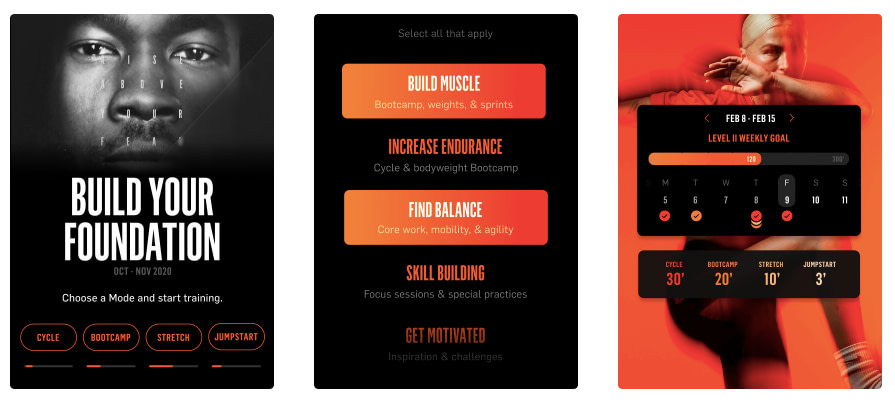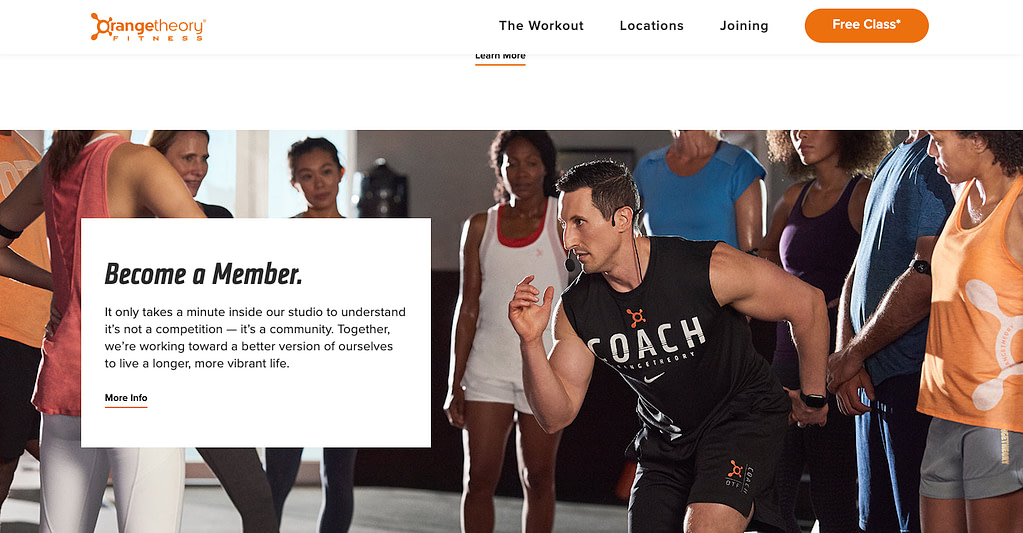The fitness industry is a competitive sector. According to Deloitte, there are more than 63,000 fitness clubs across Europe — and that number is growing every year. What’s more, of the 65.3 million fitness club members across the continent, 13.1 million are members of the top 20 fitness club operators. These include Pure Gym, Gold’s Gym, and The Gym Group — all businesses with well-established, recognizable fitness branding.
Having a strong identity has undoubtedly been a major factor in their success. And that’s something you need to think about if your fitness club, health center, gym, or yoga studio is to grab a share of the market. But what makes a recognizable fitness brand and how do you go about building one? Read on to find out more about branding for fitness and how your custom gym management software can help.
What is fitness branding?
You may think of fitness branding as a logo, sometimes accompanied by a tagline. Nike’s Swoosh and ‘Just Do It’ slogan, for example. But while these are important parts of your branding, they’re not the full story.
To develop strong branding, you first need to identify what it is your business stands for — is there anything you do differently from the competition? What’s your mission? And how do you want to be perceived by existing and future customers?
When you’ve established that, it’s time to work on making sure your unique identity comes across consistently at every customer-facing touchpoint across your business. There are several components to this; let’s see what they are!
Read also: How to create a bulletproof fitness marketing strategy?

Elements of fitness branding
In today’s digitized world, consumers are bombarded with branding in the form of adverts, social media posts, and infomercials. So it’s more important than ever that your business branding stands out.
In order to achieve that, you need to carefully consider the following elements, which can convey the unique identity of your business:
1. Brand name
These are the words you use to describe your company. Your brand name should be unique, stand out from your competitors, and authentically bring your story to light. The best fitness brand names are simple, short, easy to pronounce, and universal.
2. Logo
A good logo communicates something to your potential customers on a subconscious level — it’s a visual element that expresses the ‘vibe’ of your business. The best logos are memorable, versatile, simple and timeless. Perhaps most importantly, they’re also aesthetically pleasing.
3. Color scheme
When it comes to branding, colors are vital. Not only do they influence our emotions, they also help to make your brand memorable. Take PureGym, for example; their branding uses turquoise and dark gray which feels fresh, modern, and energetic — and it’s a combination that sticks in the mind.
4. Typography
Another important branding element is typography — the way you arrange letters and text. Not only does this help to make copy legible and clear, it can also trigger an emotional response and enhance your brand’s personality. The more customers engage with it, the more they’ll subliminally begin to associate a particular typeface with your brand.

5. Slogan
A good slogan should represent the vision of your brand. We’ve talked about Nike’s ‘Just Do It’ tagline, which, as slogans go, is one of the most impactful. It’s active, inspirational and punchy; it makes you want to lace up your sneakers and start exercising. It’s also short, simple, and memorable. When you hear the phrase, you immediately recognize it as Nike’s.
6. Tone and voice
How you convey your fitness brand’s personality has a lot to do with tone and voice.
Your voice is like your overall personality — it never changes. It shapes whether you use language in a punchy, powerful, and inspiring way like Nike; or whether you opt for a voice that’s friendly, informative, and matter-of-fact, like Lululemon.
Your tone can be adjusted depending on the situation. For example, a serious website article about the health risks associated with overtraining will require a tone that’s different from a TikTok about a fun fitness challenge. But in both instances, your voice should still shine through.
Why is strong fitness branding important to your business?
There are a number of reasons why you need to think carefully about your business branding:
To differentiate yourself from the competition
As we’ve seen, the fitness industry is competitive. If your branding catches the eye, conveys what you stand for as a business, and is in tune with what your target audience is looking for in a gym or fitness provider, they will almost certainly choose you over your competitors.
To improve recognition
You want your business to be remembered. An eye-catching logo and color scheme, a snappy slogan, and a unique tone and voice will live long in the memories of your target audience. Then, when customers need your services, your business will be the first place they turn.
To acquire new and retain existing customers
Branding can strike an emotional bond with your target audience. The more connected customers feel to your business, the more likely they are to use your services. And they’ll keep coming back, eventually turning into loyal clients and advocates who persuade their friends and family to use your business.
Examples of successful branding for fitness
Branding plays a crucial role for every fitness business, irrespective of its size. We will now take a look at OrangeTheory (which has nearly one million members and over 1300 locations worldwide) and Aarmy (with one single location) to see how they use branding to stand out from their competition.
Aarmy
Aarmy is a fitness brand offering gym membership, a subscription-based training app, and its own apparel. Their ethos is that everyone is an athlete, and we’re more likely to achieve our fitness potential by training alongside others as part of a unit.

Here’s what makes Aarmy’s branding unique and, as a result, strengthens its message:
- Their slogan is bold: ‘THE BEST FITNESS APP TO FIND YOUR GREATNESS’
- Their typography is unique: it calls to mind iconic stamps emblazoned across US military cargo (which ties in with their name)
- Their color scheme is cohesive: Aarmy use black, white, and orange across their website, marketing comms, and more
- Their branding is consistent: whether you visit Aarmy’s website, their ‘Gear’ hub, or their app, the look and feel are the same.
Orangetheory Fitness
Orangetheory is a one-hour, full-body workout that uses heart rate monitors to help members train at fat-burning intensities. This unique fitness method, along with hundreds of franchised gym studios worldwide, has helped them build a loyal customer base across the US and Europe.

Here’s how their branding has helped with that:
- During Orangetheory workouts, any time a member enters a fat-burning heart-rate zone they earn a ‘Splat Point’ (so called because ‘splat’ is what a fat cell might sound like when it’s exploding). This feature is unique to their workouts, and the ‘splat’ is depicted in their logo.
- They use smart, quippy catchphrases to describe their services. Memorable slogans such as ‘What Happens in Class Doesn’t Stay in Class’ reflect the fact that Orangetheory workouts trigger fat burning even after exercise has finished.
- Every detail of the brand — from the concept through to the design — has been thought out meticulously and the end result is a highly polished look and feel.
Wherever customers engage with Aarmy or Orangetheory Fitness, the look and feel is consistent. On that note, it’s worth mentioning that without building their apps through custom-built software, creating such a unique brand experience wouldn’t have been possible. We discuss how creating your own app versus using a ready-to-use template can empower you in bringing one-of-a-kind branding to life.
The importance of custom-built gym management software to your fitness branding
As a gym owner, you rely mainly on those who live close enough to make it to your gym. Unless you’re ready to open new studios in different locations, it’s impossible to sell your services to a larger pool of customers and scale your business. That’s why many gyms, yoga studios, and fitness center owners ask: “How can I grow my online fitness business?”.
You have two options – using an off-the-shelf solution and one that’s custom-built, i.e., created from scratch. Compared to the first option, choosing custom-built gym management software helps you deliver a more cohesive branding experience across your physical and digital properties. This will greatly improve your chances of winning and retaining online customers, compared to off-the-shelf solutions.

Here are the benefits of choosing custom software:
- Working with a fitness app development company, you can create a design that’s fully in line with your studio branding and offer a seamless experience, whether customers are engaging with your brand digitally or in person.
- You can offer your customers a product with a premium look and feel, rather than a web or mobile app that feels like a compromised version of your physical offering.
- You can provide your members with a fully personalized workout experience using the latest data science and machine learning in fitness.
- You will be one step ahead of your competitors, thanks to aligning with the current technology trends in fitness apps.
Branding for fitness and tailoring studio management software — summary
With the number of fitness apps on the market, distinguishing yourself from others isn’t limited solely to the number of modules or pricing. Branding is equally important (or, for some users, the single most important decision-making factor). So, how do you make sure that your branding resonates strongly among your target users? Pay attention to the right tone of voice, color scheme, slogan, and the remaining brand design principles we’ve discussed in this piece. This will not only help you make yourself more memorable but also positively impact your ability to acquire new and retain current customers.
Last but not least, be sure to decide on the right technical solution – you might want to consider opting for a custom-built app, especially if you want to offer a unique, one-of-a-kind brand experience.
Best design practices to help you strengthen your brand!
